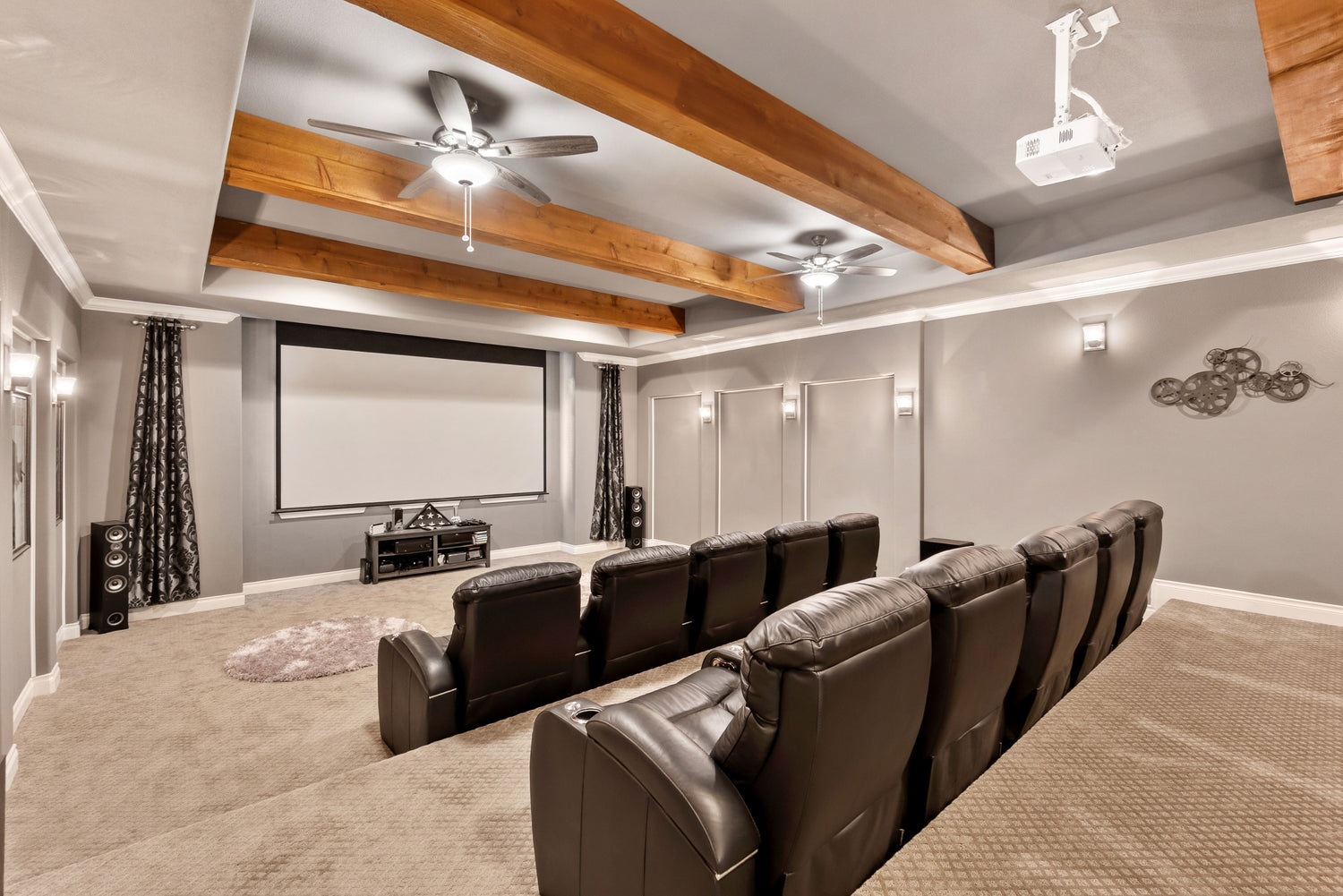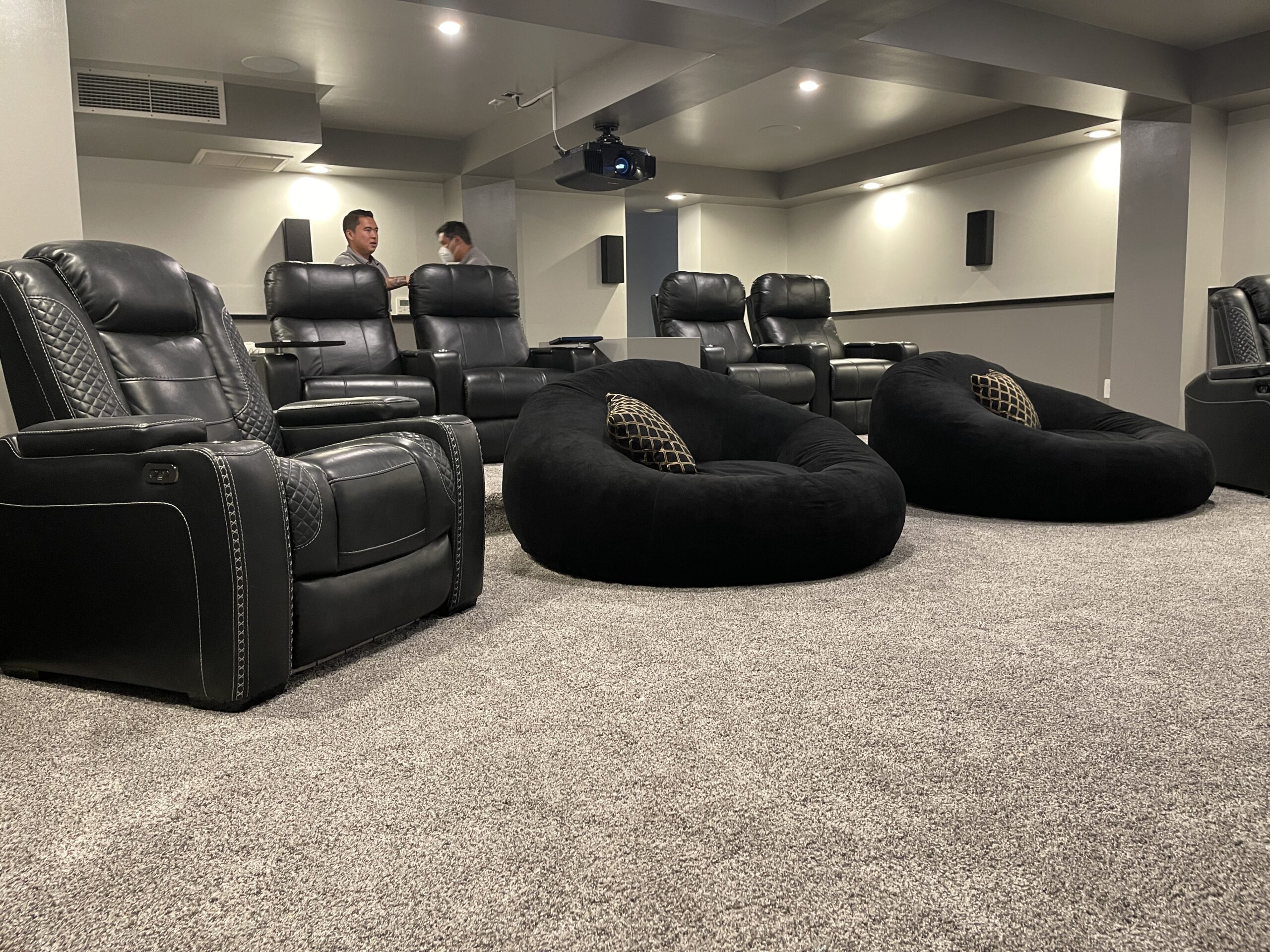Home Theater 101: Whatever You Need to Know for a Motion Picture Experience in the house
Developing a home theater that equals the motion picture experience of an industrial theater entails careful factor to consider of multiple parts, including screen choice, stereo, and room layout. Each aspect plays a critical function in achieving the preferred setting and performance. Whether you are pondering the ideal display dimension or the complexities of surround sound, understanding these fundamentals is necessary. As we explore these important components, it comes to be apparent that the options made can significantly impact your general viewing experience, leaving one to ponder just how these choices will shape your personal cinema.
Picking the Right Screen
When establishing a home theater, choosing the right display can make or damage the seeing experience - tampa home theater installation. The screen works as the focal point of your arrangement, influencing photo high quality, watching angles, and overall aesthetic. Trick factors to think about consist of display resolution, size, and type
First, figure out the proper screen size based on your space dimensions and seating range. A general guideline is to rest about 1.5 to 2.5 times the angled screen dimension for optimum watching. Next off, pick between numerous display kinds, such as fixed-frame, motorized, or retracting displays, each offering distinctive advantages. Fixed-frame screens generally supply the finest image high quality, while motorized alternatives enable versatility in area usage.
Resolution is an additional crucial aspect. For an absolutely immersive experience, consider a display made for 4K or even 8K content, ensuring intensity and quality. In addition, take into consideration the display's gain, which affects brightness and contrast; a greater gain can improve brightness in well-lit spaces, while a reduced gain might be better for darker atmospheres.
Picking Sound Equipment
Audio tools is an essential element of any home movie theater system, dramatically boosting the total watching experience. The option of audio equipment can determine the depth, clarity, and immersion of noise, critical for producing a motion picture ambience.
When choosing audio devices, take into consideration a surround stereo, which commonly consists of a receiver, numerous audio speakers, and a speaker. A 5.1 or 7.1 channel system is suggested, where the initial number stands for the speakers and the 2nd the subwoofer, giving an immersive soundscape. The receiver is the heart of the system, managing audio and video clip signals, and ought to sustain contemporary styles like Dolby Atmos for an improved spatial experience.
Quality audio speakers are necessary; search for models that supply a balanced sound profile with great bass reaction. Floor-standing audio speakers can create richer noise, while bookshelf alternatives save space. In addition, take into consideration wireless alternatives for simplicity of installation, although wired systems often deliver exceptional performance.

Ideal Seating Plans
Producing an excellent home cinema experience hinges considerably on optimal seating plans. The arrangement of seats plays an essential role in both convenience and watching high quality, straight impacting the total motion picture experience.
First, think about the more helpful hints display size and checking out range. A common standard is to position seats at a range roughly 1.5 to 2.5 times the diagonal dimension of the screen. This ensures an immersive experience without straining the eyes.
Following, altitude is essential. The back rows must be higher than the front to stay clear of obstructions if your seating is in a tiered layout. For flat seats, ensure that the front row is not too close to the screen, and that everyone has a clear view.
Furthermore, think about the setup in terms of social characteristics. Group seats can boost the communal experience, while individual seats might be favored for individual watching.

Finally, prioritize convenience with ergonomic seats that supports prolonged watching durations. Including recliner chairs or supported seats can significantly improve the experience, making the home cinema a preferred location for both entertainment and relaxation.
Lighting and Setting
Reliable illumination and atmosphere are vital components of a properly designed home cinema, as they significantly influence the viewing experience. The ideal lighting can enhance the cinematic feeling, while poor choices can detract from it. For optimum results, take into consideration a split lights technique that includes ambient, job, and accent illumination.
Ambient lights provides general illumination, making sure that the room is not completely have a peek at these guys dark, which can strain the eyes. Dimmer switches are extremely advised, permitting for changes based on the web content being watched. Task lights, such as wall surface sconces or flooring lamps, supplies practical lighting for activities like reading or browsing the space without interrupting the overall ambience.
Accent lights can be utilized to highlight building functions or develop prime focus, adding depth and interest to the space. LED strip lights behind screens or along shelves can offer a refined radiance that boosts the aesthetic experience without frustrating the audience.

Wiring and Installation Tips
A tactical wiring setup is crucial for accomplishing optimal performance in your home movie theater system. Appropriate circuitry not only makes certain high-grade sound and video signals however additionally improves the overall aesthetic of your area. Begin by drawing up your format, recognizing where each part will certainly be placed, including your screen, audio speakers, and receiver.
When picking wires, prioritize premium, properly evaluated circuitry to decrease signal loss. HDMI cables should be utilized for video clip links, while audio speaker cord must match the requirements of your speakers and amplifier. Go with in-wall ranked wires to follow safety and security requirements and keep a clean look.

Final Thought
In recap, creating a phenomenal home movie theater experience calls for careful factor to consider of numerous aspects, consisting of display selection, audio equipment, seating setups, lights, and wiring. By prioritizing these elements, a cinematic atmosphere can be successfully reproduced, allowing for immersive checking out experiences that match traditional movie theater setups.
Developing a home theater that rivals the motion picture experience of a commercial theater entails careful consideration of numerous components, including display selection, audio systems, and area design.When establishing up a home cinema, choosing the appropriate display can make or damage the seeing experience. Next off, choose between various screen kinds, such as fixed-frame, motorized, or retracting displays, each offering distinct benefits. For a really immersive experience, think about a screen made for 4K or also 8K material, ensuring intensity and clearness.In recap, developing a remarkable home movie theater experience calls for cautious factor to consider of numerous aspects, consisting of screen choice, audio equipment, seating arrangements, lighting, and circuitry.